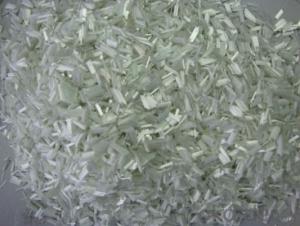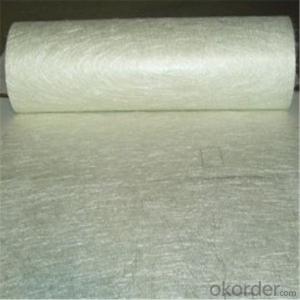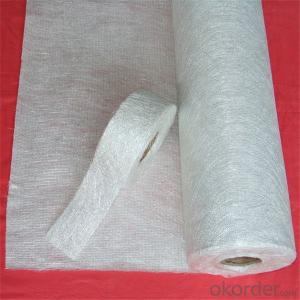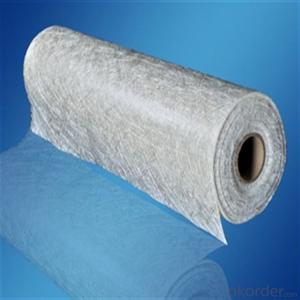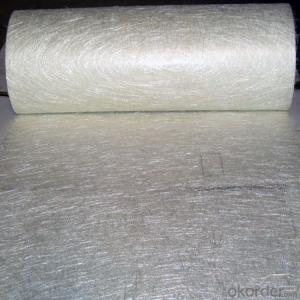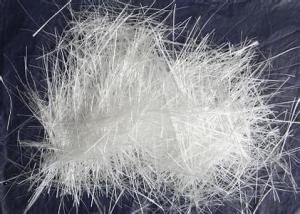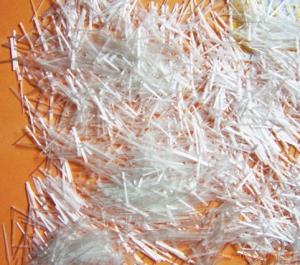E-glass Fiber Chopped Strands For BMC Usage
- Loading Port:
- Shanghai
- Payment Terms:
- TT or LC
- Min Order Qty:
- 20000 kg
- Supply Capability:
- 200000 kg/month
OKorder Service Pledge
OKorder Financial Service
You Might Also Like
DESCRIPTION:
E Glass Fiber Chopped Strands for BMC Usage are compatible with unsaturated polyester, epoxy resin and phenolic resins.
The end-use applications include transportation, building & construction, electronic & electrical, mechanical, and light industry.
Product Features:
Extremely low resin demand, delivering low viscosity to BMC paste
High impact strength; High LOI rate
High strand stiffness; Compatible with rubber
Product Specifications:
Property | Fibre diameter | Moisture Content | Size Content | Chop |
(%) | (%) | (%) | (%) | |
Mathods | IS01888 | ISO3344 | ISO1887 | |
3mm | ±10 | ≤3.0 | 0.1±0.05 | 98 |
6mm | ||||
9mm | ||||
12mm |
Special specification can be produce according to customer requirements.
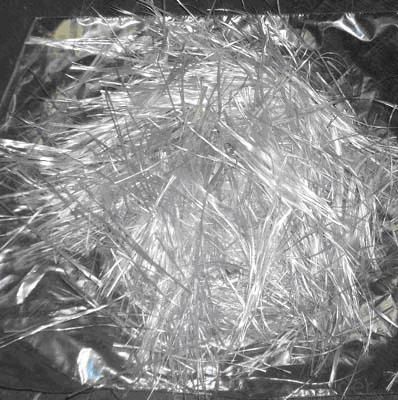
Packaging:
Each bag can be taken (15-25kgs)。 Could also take a big container bag.
Storage:
Unless otherwise specified, It should be stored in a dry, cool and rain-proof area. It is recommended that the room temperature and humidity should be always maintained at 15℃~35℃ and 35%~65% respectively.
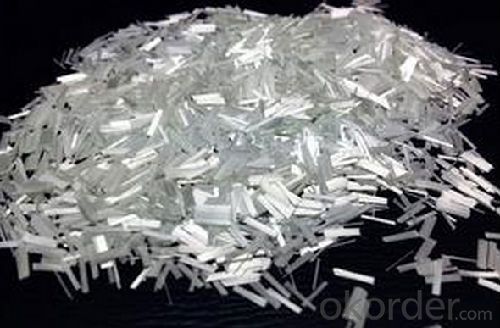
FAQ
1..Is your company a factory or trade company?
A:We have our own factory , we are on this business more than 10 years.
2.Who will pay for the express cost ?
A: We can support you free samples ,but express cost will be paid by you .
3.How long is the delivery time?
A:within 10-15 days after receiving deposit.
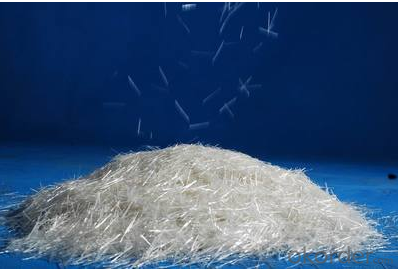
- Q:Can fiberglass chopped strand be used for reinforcing concrete structures?
- Yes, fiberglass chopped strand can be used for reinforcing concrete structures. It is commonly added to concrete mixtures to improve its tensile strength, reduce cracking, and enhance overall durability. The fiberglass strands provide reinforcement and improve the structural integrity of the concrete, making it suitable for various construction applications.
- Q:Can fiberglass chopped strand be used in corrosive environments?
- Fiberglass chopped strand can be used in certain corrosive environments, but it is important to consider the specific type of resin used in combination with the chopped strand. Fiberglass itself is resistant to many corrosive substances, including saltwater, mild acids, and bases. However, the resin used to bind the chopped strand together can vary in its resistance to corrosion. Epoxy resin, for example, is highly resistant to corrosion and can withstand exposure to a wide range of chemicals and corrosive environments. It is commonly used in applications where fiberglass chopped strand is required to resist corrosion, such as in the construction of chemical storage tanks, pipes, and other industrial equipment. On the other hand, polyester resin is less resistant to corrosion and may not be suitable for use in highly corrosive environments. It can be used in less harsh conditions, such as in the construction of swimming pools or automotive parts. In summary, fiberglass chopped strand can be used in corrosive environments depending on the specific resin used. It is crucial to select a resin that is compatible with the corrosive substances present in the environment to ensure the longevity and performance of the fiberglass material. Consulting with a materials engineer or a supplier specializing in fiberglass products can help determine the most suitable resin for a specific corrosive environment.
- Q:Is fiberglass chopped strand suitable for architectural applications?
- Architectural applications can benefit greatly from the use of fiberglass chopped strand. This versatile material offers numerous advantages and is well-suited for architectural purposes. It is lightweight, strong, durable, and resistant to corrosion, making it an excellent choice for a variety of architectural components. When it comes to architectural applications, fiberglass chopped strand has a wide range of uses. It can be used to reinforce architectural panels, walls, and ceilings, providing additional strength and stability. Furthermore, fiberglass can be molded into different shapes and forms, allowing architects to explore creative design possibilities. Architects can also utilize fiberglass chopped strand to create distinctive architectural features like columns, domes, and arches. Its malleability enables it to be easily shaped and formed into intricate designs, offering architects the flexibility to create visually appealing structures. Another advantage of fiberglass chopped strand is its resistance to fire and chemicals. This makes it suitable for architectural applications where fire and chemical resistance are crucial factors to consider, especially in industrial or commercial buildings. Moreover, fiberglass chopped strand is a cost-effective alternative to materials like steel or concrete. It requires less maintenance and has a longer lifespan, making it a cost-efficient choice for architectural projects. In conclusion, fiberglass chopped strand is an ideal material for architectural applications due to its lightweight nature, strength, durability, corrosion resistance, fire resistance, chemical resistance, and cost-effectiveness. Its versatility and ability to be molded into various shapes and forms make it an excellent choice for architectural components and features.
- Q:How does the fiber surface treatment affect the performance of fiberglass chopped strand?
- The fiber surface treatment plays a crucial role in enhancing the performance of fiberglass chopped strands. It helps to improve the adhesion between the glass fibers and the matrix material in composite applications. By providing a chemically compatible interface, the surface treatment promotes better wetting and dispersion of the fibers, resulting in improved mechanical properties, such as tensile strength and impact resistance. Additionally, the treatment reduces fiber breakage during processing, leading to better overall performance of the fiberglass chopped strand in various applications.
- Q:Can fiberglass chopped strand be used in the production of sporting equipment?
- Yes, fiberglass chopped strand can be used in the production of sporting equipment. It is commonly used in various applications like reinforcing materials for hockey sticks, tennis rackets, surfboards, and other sports equipment, as it provides excellent strength, durability, and lightweight properties.
- Q:Can fiberglass chopped strand be used in insulation materials?
- Yes, fiberglass chopped strand can be used in insulation materials. Fiberglass chopped strand is commonly used as a reinforcement material in insulation applications. The chopped strands are typically mixed with other materials, such as binders and fillers, to create insulation products like fiberglass batts or blankets. The chopped strands help to improve the overall strength, durability, and thermal performance of the insulation material. Additionally, fiberglass chopped strand insulation is known for its excellent fire resistance properties, making it a popular choice for insulating residential and commercial buildings.
- Q:What are the safety precautions to be taken while handling fiberglass chopped strand?
- To ensure the safety of individuals when working with fiberglass chopped strand, it is important to take several safety precautions. These precautions include: 1. Wearing the appropriate Personal Protective Equipment (PPE): It is essential to wear safety goggles or a face shield to protect the eyes from loose fibers or particles. Gloves should also be worn to avoid direct contact with the fiberglass, which can cause skin irritation or cuts. Furthermore, it is recommended to wear long-sleeved shirts and pants for added protection. 2. Ensuring proper ventilation: It is advisable to handle fiberglass chopped strand in a well-ventilated area to minimize the inhalation of airborne fibers. If working indoors, open windows and doors or use exhaust fans to promote air circulation. When working outdoors, position yourself upwind to avoid inhaling fiberglass particles. 3. Storing the material correctly: Fiberglass chopped strand should be stored in a secure location away from moisture and direct sunlight. This prevents any potential degradation and ensures its safety for future use. 4. Using careful handling techniques: When handling the material, it is important to be cautious. Avoid dropping or mishandling the fibers to prevent the release of loose particles into the air. Using gloves or specialized tools designed for fiberglass handling can minimize direct contact. 5. Maintaining cleanliness and hygiene: After handling fiberglass chopped strand, it is crucial to thoroughly wash your hands and exposed skin to remove any loose fibers. Additionally, avoid touching your face, eyes, or mouth during the handling process to prevent accidental ingestion or irritation. 6. Proper disposal: To prevent environmental contamination, it is important to dispose of any unused or waste fiberglass chopped strand in accordance with local regulations and guidelines. By adhering to these safety precautions, individuals can minimize the associated risks of handling fiberglass chopped strand and create a safe working environment.
- Q:How does the fiber aspect ratio affect the performance of chopped strand composites?
- The fiber aspect ratio plays a significant role in determining the performance of chopped strand composites. Aspect ratio refers to the ratio of fiber length to fiber diameter. In general, composites with higher aspect ratio fibers tend to exhibit improved mechanical properties. Longer fibers provide more continuous reinforcement throughout the composite matrix, resulting in increased stiffness, strength, and fatigue resistance. The longer fibers create a more efficient load transfer mechanism, distributing the applied stress more evenly and preventing crack propagation. Furthermore, higher aspect ratio fibers offer better interfacial bonding with the matrix material. This enhanced interfacial adhesion improves the load transfer efficiency, minimizing stress concentrations and potential delamination. It also increases the overall toughness of the composite, making it more resistant to impacts and reducing the risk of fiber pullout. However, there is a limit to the beneficial effects of increasing aspect ratio. Beyond a certain point, longer fibers become more difficult to process and disperse uniformly within the matrix. This can lead to fiber entanglement, clumping, or poor wetting, resulting in lower mechanical properties and a decrease in composite performance. Additionally, the aspect ratio can influence the composite's manufacturing process. Higher aspect ratio fibers may require more advanced processing techniques, such as injection molding or compression molding, to ensure proper fiber alignment and distribution. On the other hand, shorter fibers with lower aspect ratios are often preferred for simpler manufacturing methods like hand lay-up or filament winding. In summary, the fiber aspect ratio significantly affects the performance of chopped strand composites. Higher aspect ratio fibers generally enhance mechanical properties, interfacial bonding, and overall composite toughness. However, there is an optimum range for aspect ratio, and beyond that, processing challenges may arise. Therefore, a careful balance must be struck between fiber length and diameter to achieve the desired performance characteristics in chopped strand composites.
- Q:How does the orientation of the chopped strand affect its performance?
- The orientation of the chopped strand plays a crucial role in determining its performance. When the strands are oriented in a specific direction, it enhances the strength and stiffness of the composite material. This directional alignment allows for better load distribution, improved impact resistance, and increased overall mechanical properties. On the other hand, random or unidirectional orientations may result in reduced performance as the loads may not be efficiently distributed, leading to weaker and less durable composite structures.
- Q:Is fiberglass chopped strand compatible with melamine resin?
- Yes, fiberglass chopped strand is compatible with melamine resin. Melamine resin is a type of thermosetting plastic that is known for its excellent chemical resistance and durability. It forms strong bonds with various types of reinforcing fibers, including fiberglass chopped strand. When the chopped strand is impregnated with melamine resin and cured, it creates a composite material that offers enhanced strength, stiffness, and resistance to chemicals, heat, and moisture. This compatibility makes fiberglass chopped strand an ideal reinforcement material for melamine resin-based composites in various industries, such as automotive, construction, and aerospace.
1. Manufacturer Overview |
|
|---|---|
| Location | |
| Year Established | |
| Annual Output Value | |
| Main Markets | |
| Company Certifications | |
2. Manufacturer Certificates |
|
|---|---|
| a) Certification Name | |
| Range | |
| Reference | |
| Validity Period | |
3. Manufacturer Capability |
|
|---|---|
| a)Trade Capacity | |
| Nearest Port | |
| Export Percentage | |
| No.of Employees in Trade Department | |
| Language Spoken: | |
| b)Factory Information | |
| Factory Size: | |
| No. of Production Lines | |
| Contract Manufacturing | |
| Product Price Range | |
Send your message to us
E-glass Fiber Chopped Strands For BMC Usage
- Loading Port:
- Shanghai
- Payment Terms:
- TT or LC
- Min Order Qty:
- 20000 kg
- Supply Capability:
- 200000 kg/month
OKorder Service Pledge
OKorder Financial Service
Similar products
New products
Hot products
Hot Searches
Related keywords


